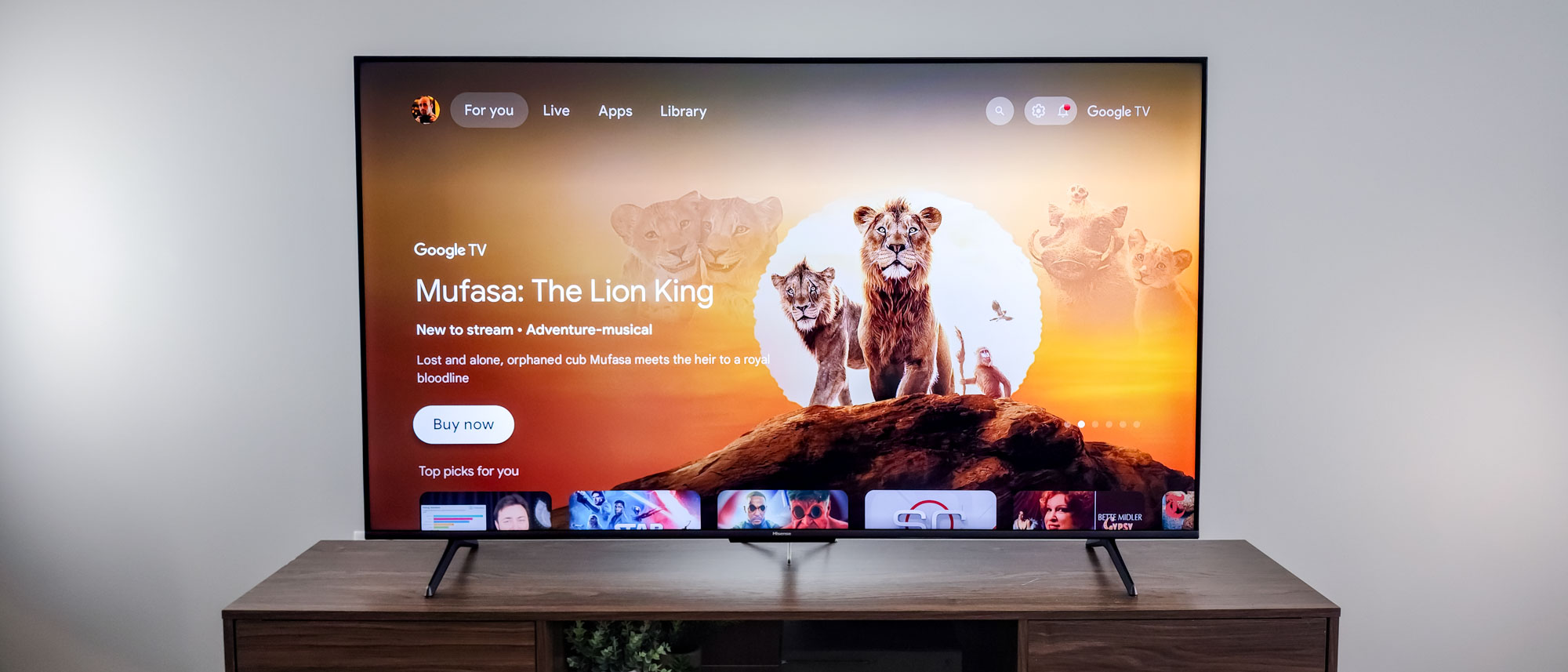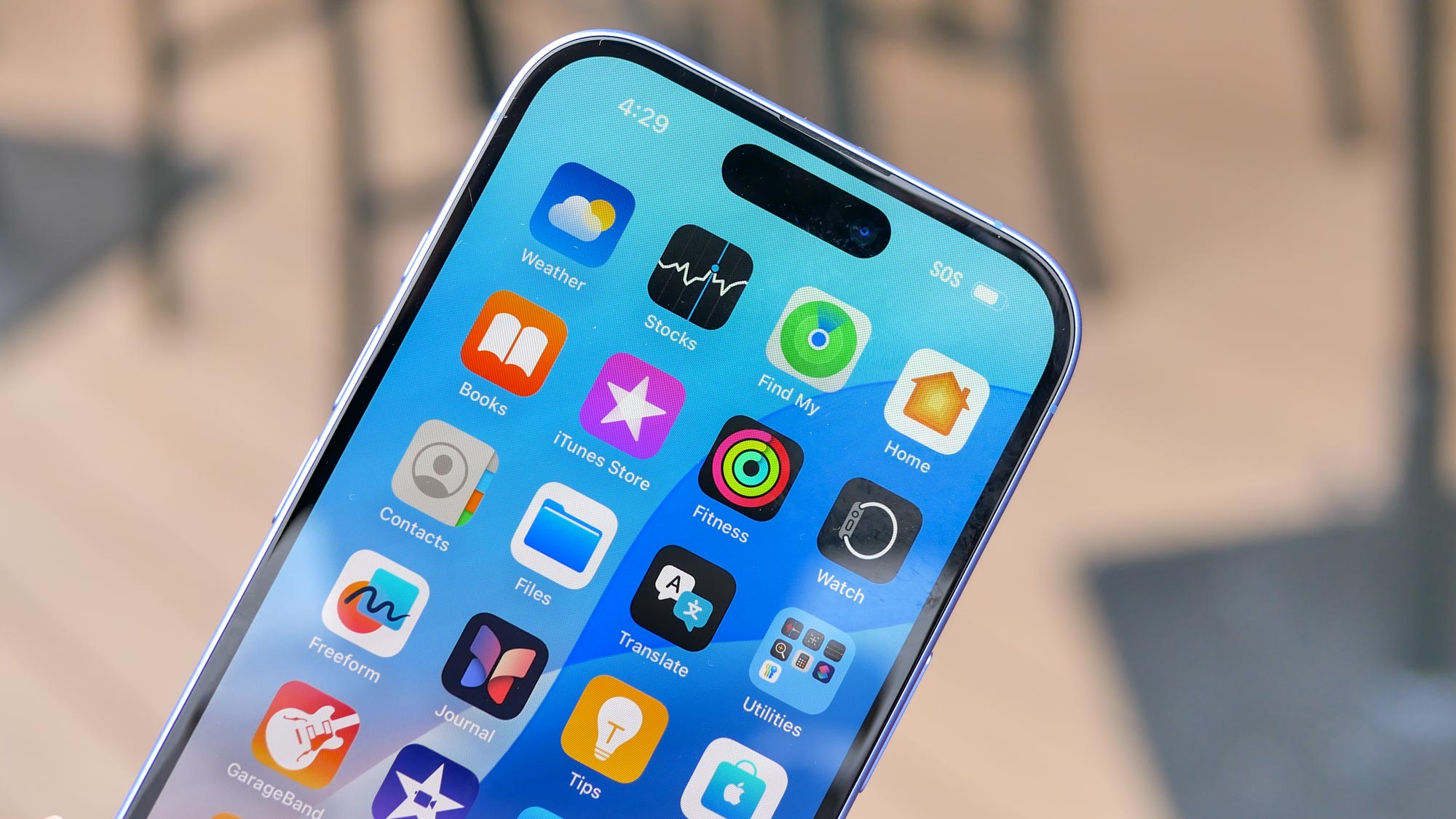Tom's Guide Verdict
The Hisense U6N Mini-LED TV is a great budget TV loaded with features and impressive picture quality for its price. However, its shortcomings definitely put it a step behind rival midrange TVs.
Pros
- +
Loaded with smart features
- +
Dolby Vision IQ and HDR10+ support
- +
Impressive picture quality for the price
Cons
- -
No HMDI 2.1 ports
- -
Disappointing sound quality
Why you can trust Tom's Guide
Price: $549 (on sale for $349)
Screen size: 55 inches
Model: Hisense 55U6N
Resolution: 3,840 x 2,160 (4K UHD)
HDR: Dolby Vision IQ, HDR10, HDR10+, HLG
Refresh Rate: 60Hz
Ports: 4x HDMI 2.0, 2x USB 2.0
Audio: 20W
Smart TV Software: Google TV
Size (without stand): 48.5 x 28.2 x 3.0 inches
Weight (without stand): 30.4 pounds
The Hisense U6N Mini-LED TV is a great budget TV. It comes loaded with features like Dolby Vision IQ, HDR10+, Dolby Atmos and Filmmaker mode, all at a price that's less than $400.
But it's still a distinctly budget TV, especially if you compare it to midrange models that, with discounts, can fall into the price range of a budget TV. In particular, the lack of HDMI 2.1 ports is a glaring omission, and you'll want a soundbar to pair with the loud, but often muddy, speakers.
Don't let that scare you away, though. At $349 for a 55-inch model, this is still a bargain. You'd need to spend over $500, most likely, to find a TV with more features and better picture quality.
So while this TV won't be a best TV contender, it's a great choice for those looking for a budget TV. Here's why the Hisense U6N is a great option if you're not trying to break the bank.
Hisense U6N Mini-LED TV review: Pricing and availability
The Hisense U6N is already a relative bargain at its list price of $549. But it's currently on sale at multiple stores, bringing the price down as much as $500.
I’ve listed the most up-to-date sale prices of each model in the series below.
- Hisense 55U6N (55-inch): $349.99
- Hisense 65U6N (65-inch): $499.99
- Hisense 75U6N (75-inch): $599.99
- Hisense 85U6N (85-inch): $999.99
Not sure which size TV you need? Check out our ‘What TV size should you buy?’ guide.
Hisense U6N Mini-LED TV review: Design and remote
Design-wise, the Hisense U6N looks like your average LED-LCD screen. Older CRT TVs and even older flat screen TVs would make the Hisense U6N look svelte, but I currently have it set up in my office where I see the back every time I walk in the door and I can't help but notice how thick the Hisense is compared to the TCL QM6K I recently reviewed.
Staring at this TV face-on, however, it's perfectly pleasant to look at. The bottom bezel is a little thicker than some modern TVs, sure, but it's not ugly by any stretch of the imagination.
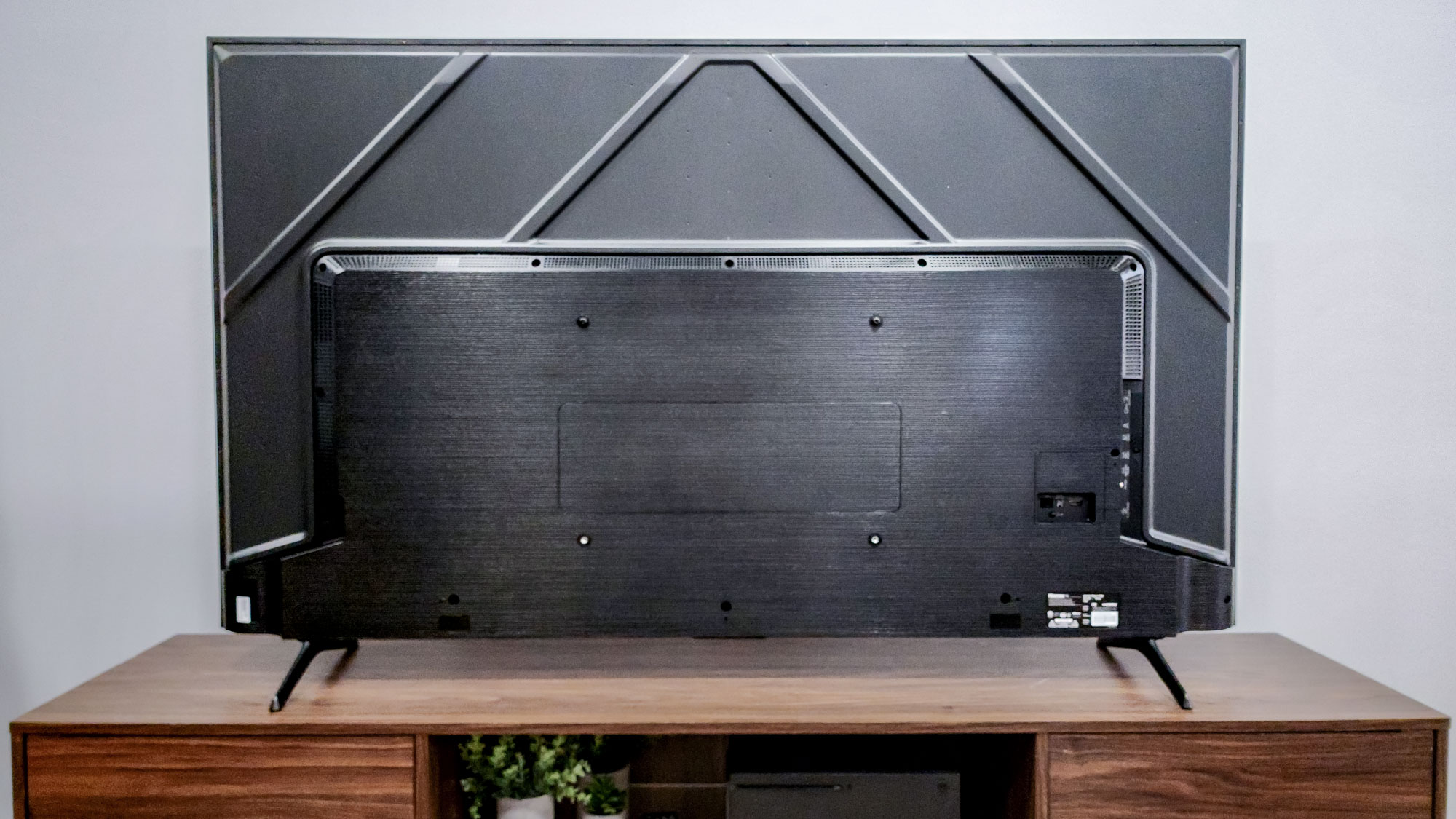
To keep the display upright, Hisense includes a pair of slim, wide-set feet that easily slot into place with the assistance of a few screws. I set it up on my own without issue.
If you opt for a wall-mount setup, that's painless too. The only thing you'll need to do is remove two screws from the middle of the back of the display panel housing to ready the 400 x 200 VESA hole pattern for wall mounting.
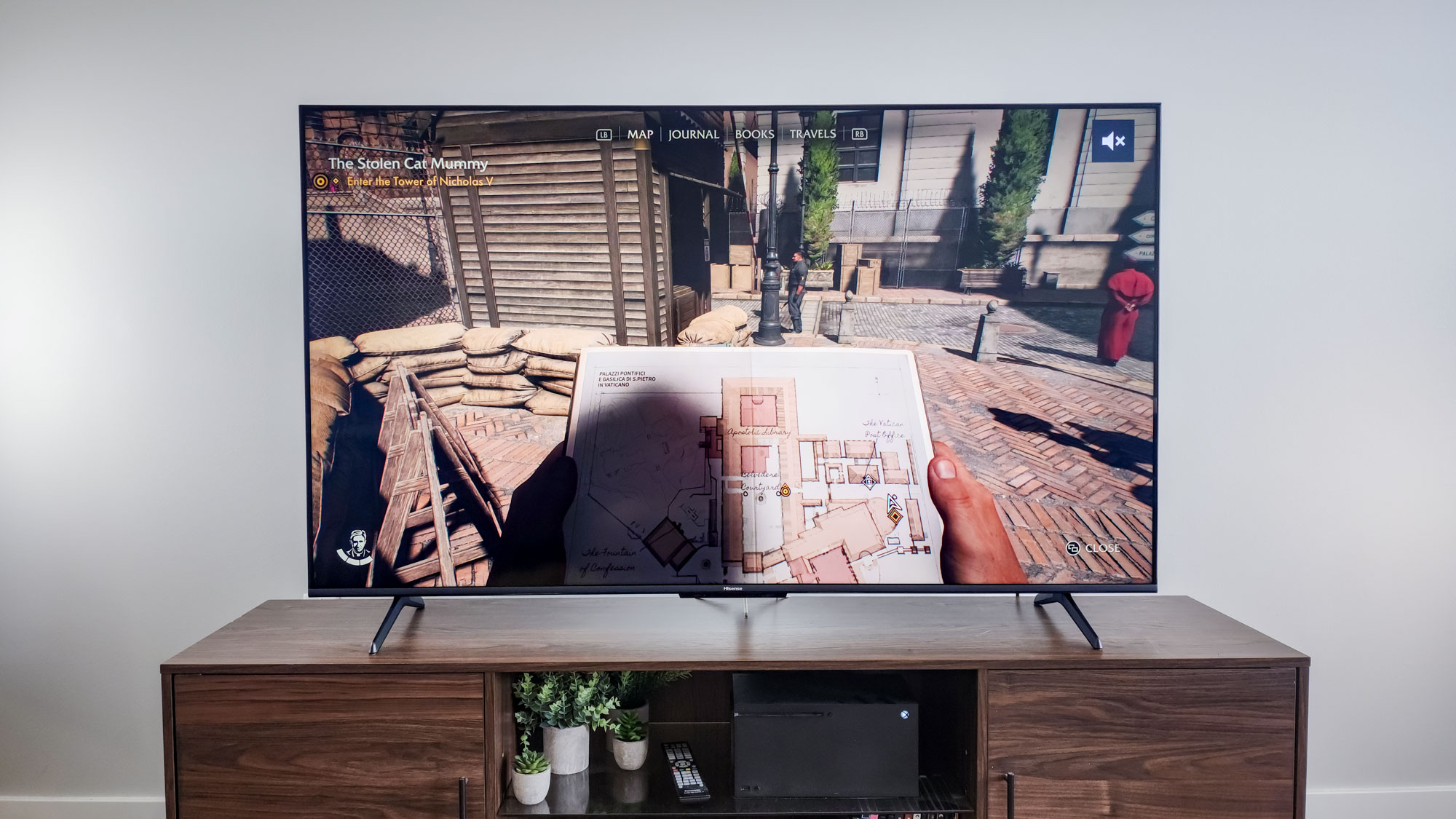
Here's the one thing I love about the design of this TV, though — the remote has the Home button in the right spot.
The remote itself is a mixed bag. It feels like cheap plastic, yet it has some weight to it. It's bulky and not especially ergonomic, but the design of the buttons feels well-thought out. For example, the Google Assistant button is above the directional pad and the Home button below it. Other Google TVs, like the TCL QM6K put the Google Assistant button in the center of the remote and the Home button to the side. This remote is much better laid out.
Hisense U6N Mini-LED TV review: Ports
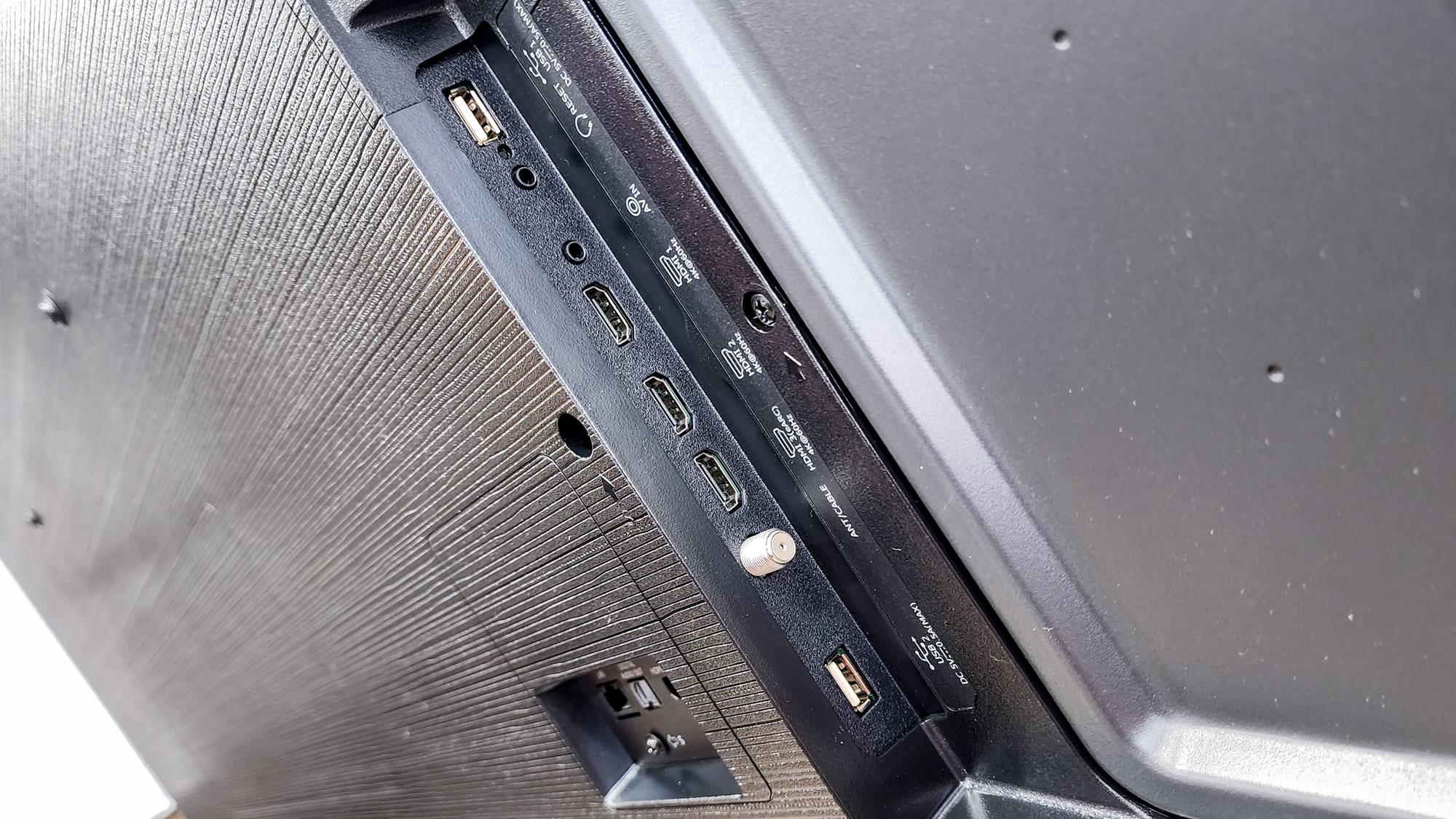
The good news is that there are plenty of ports on the Hisense U6N.
On the right side of the TV are three HDMI 2.0 ports, the third of which doubles as an eARC port. There are also two USB 2.0 ports and a cable/antenna input.
On the back, there are even more ports. You get a fourth HDMI 2.0 port an ethernet port and a digital optical audio output.
Unfortunately, there are no HDMI 2.1 ports, meaning the Hisense U6N is limited to a native 60Hz refresh rate and isn't future-proof. But those are the type of concessions that sometimes come with buying a budget TV.
Hisense U6N Mini-LED TV review: How we test
At Tom's Guide, we follow a standard testing protocol for every TV we review. Our benchmarks include technical and subjective tests designed to rate the set’s performance.
For our technical tests, we use a Jeti spectraval 1501-HiRes spectroradiometer, a Klein K10-A colorimeter, a Murideo 8K-SIX-G Metal pattern generator, and Portrait Displays’ Calman TV-calibration software to take measurements. We also use a Leo Bodnar 4K Input Lag Tester for determining the TV’s gaming prowess.
Subjective tests vary based on the reviewer, but usually feature anecdotes from a diverse selection of movies, TV shows, and other content reflecting the types of things you may actually want to watch on the TV. For a more detailed look at what we do and how we do it, check out our “How we test TVs” page.
Hisense U6N Mini-LED TV review: Performance and test results
The performance metrics of the Hisense U6N are impressive, especially for its price. While it's not the best compared to its closest competition in the budget/midrange category, it's close and performs well across the board.
| Row 0 - Cell 0 | Hisense U6N | TCL QM6K | Samsung Q60D | Sony Bravia 3 | TCL QM7 |
SDR Brightness (10%, in nits) | 607 | 688 | 453 | 398 | 836 |
Delta-E (lower is better) | 1.7 | 1.0 | 2.5 | 3.5 | 1.9 |
Rec. 709 % Gamut Coverage | 99.08 | 99.50 | 99.61 | 99.90 | 99.91 |
HDR Brightness (10%, in nits) | 615 | 695 | 468 | 424 | 2,380 |
UHDA-P3 % Gamut Coverage | 93.04 | 94.71 | 90.80 | 96.10 | 97.81 |
Rec. 2020 % Gamut Coverage | 75.10 | 71.23 | 69.72 | 73.95 | 76.87 |
Input Lag (ms) | 9.3 | 13.1 | 9.5 | 9.8 | 13.2 |
As you can see in the table above, the TCLs edge out the Hisense U6N when it comes to brightness, something I can confirm from testing I've done.
It also struggles a bit with color gamut coverage, something I was a bit surprised by. But it doesn't fall behind the competition much and still manages to outperform some similarly priced TVs.
One area where the Hisense is the best, though, is input lag. At 9.3 ms, it's quicker than its fellow budget TVs and significantly better than the TCL TVs.
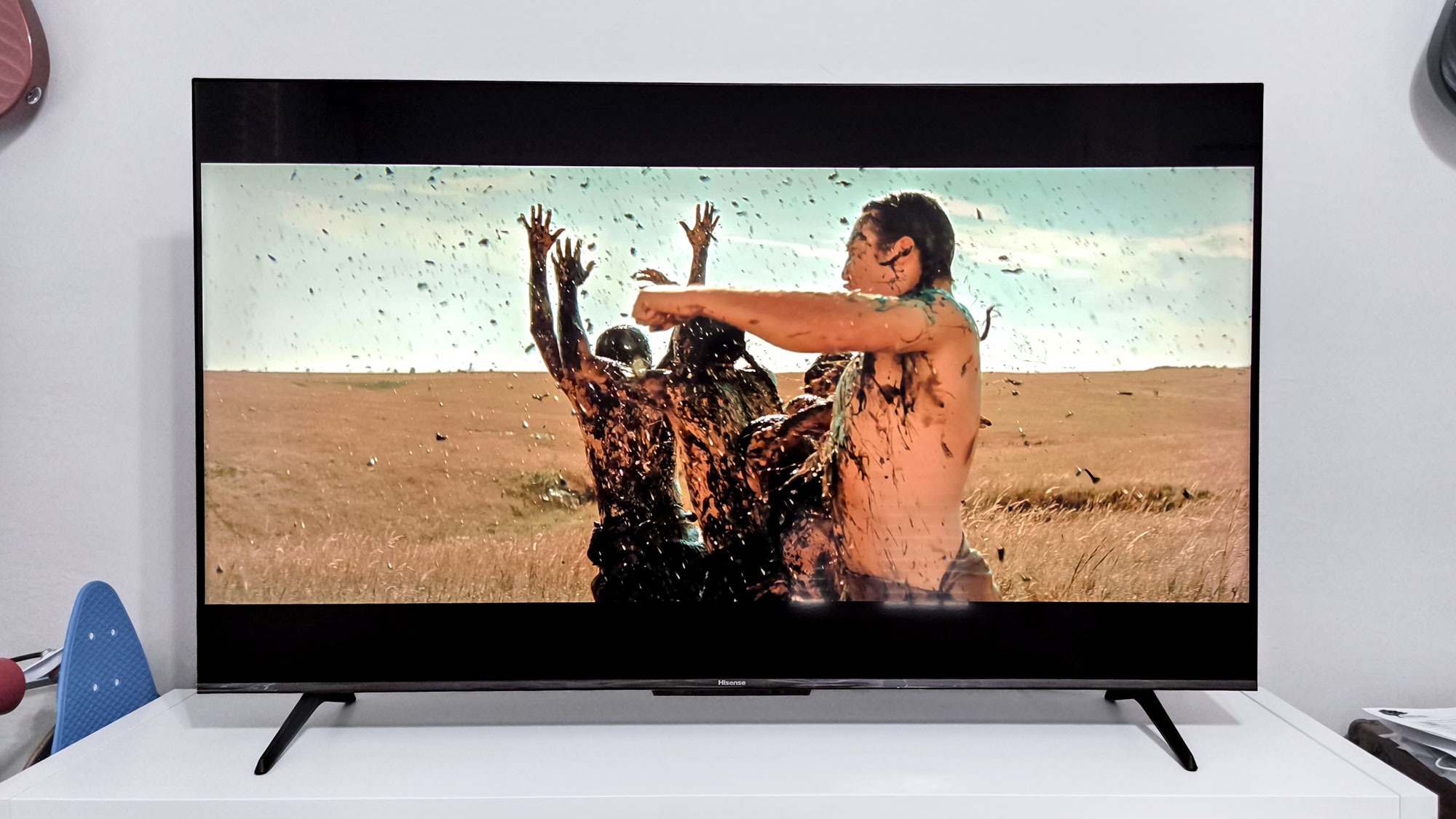
Our testing shows that the Hisense U6N is brighter than some of its competition, but it doesn't quite hit the peak brightness of the TCL QM6K or TCL QM7. This is despite all three being Mini-LED TVs with full array local dimming,
Having just tested the TCL QM6K, I can confirm that the Hisense U6N display looks darker. It was still plenty bright in most instances, but in some instances I could tell the difference.
For example, "Killers of the Flower Moon" in 4K Dolby Vision IQ HDR was probably the best the Hisense U6N looked, with stunning picture quality. However, when testing "Dune: Part Two" in Filmmaker mode, the color accuracy was impressive, but that particular picture mode was less bright than I expected.
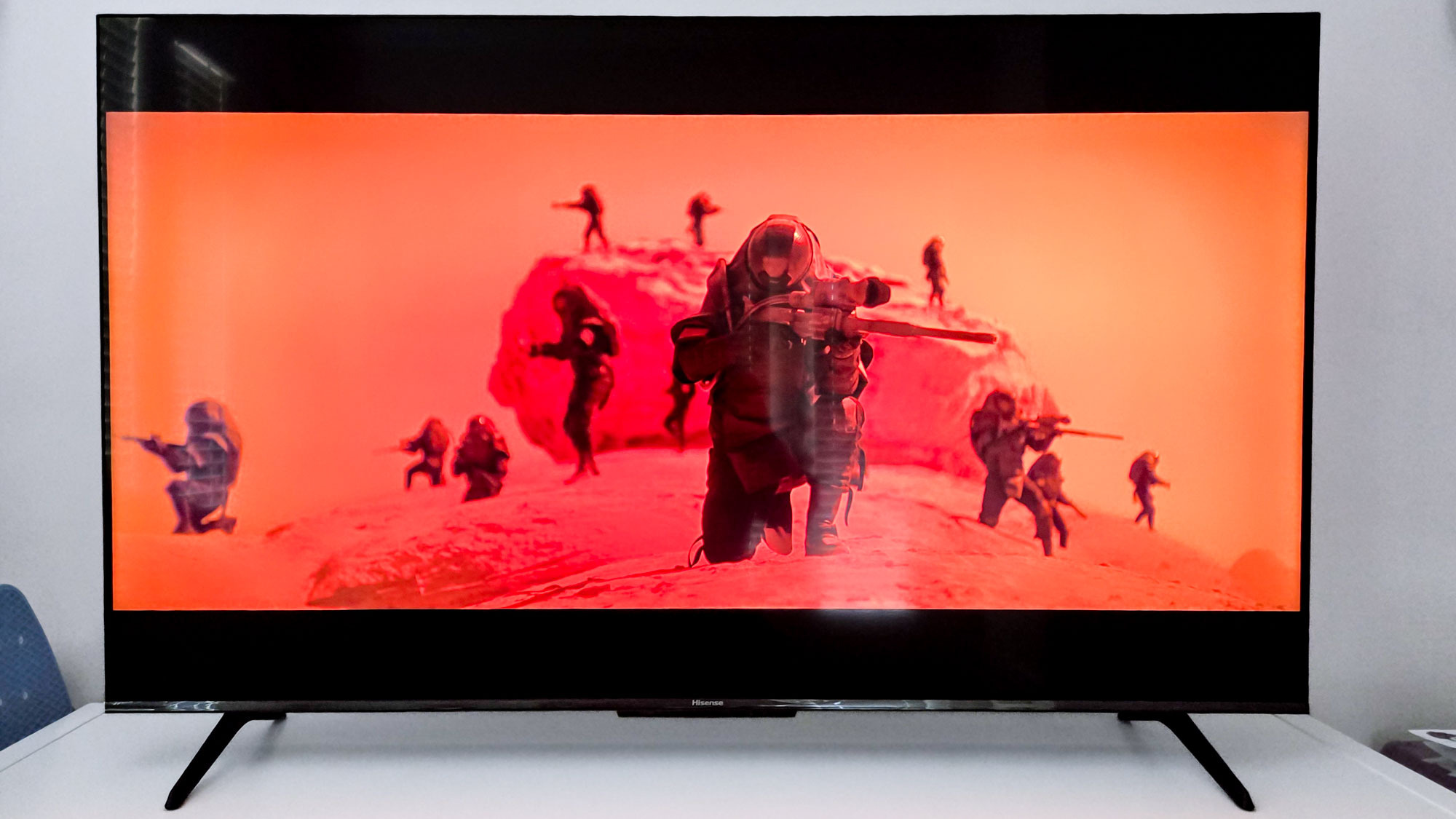
In fact, I often came away more impressed with the Dolby Vision IQ performance than the Filmmaker mode performance on the Hisense U6N. The lone exception was "Top Gun: Maverick," which even in Dolby Vision IQ HDR, was too dark at times. I could barely make out Ed Harris's facial features.
Unfortunately, Dolby Vision IQ and Filmmaker mode aren't always available. When that is the case, opt for theater mode, which is very similar to Filmmaker mode but with a bit more brightness and color saturation.
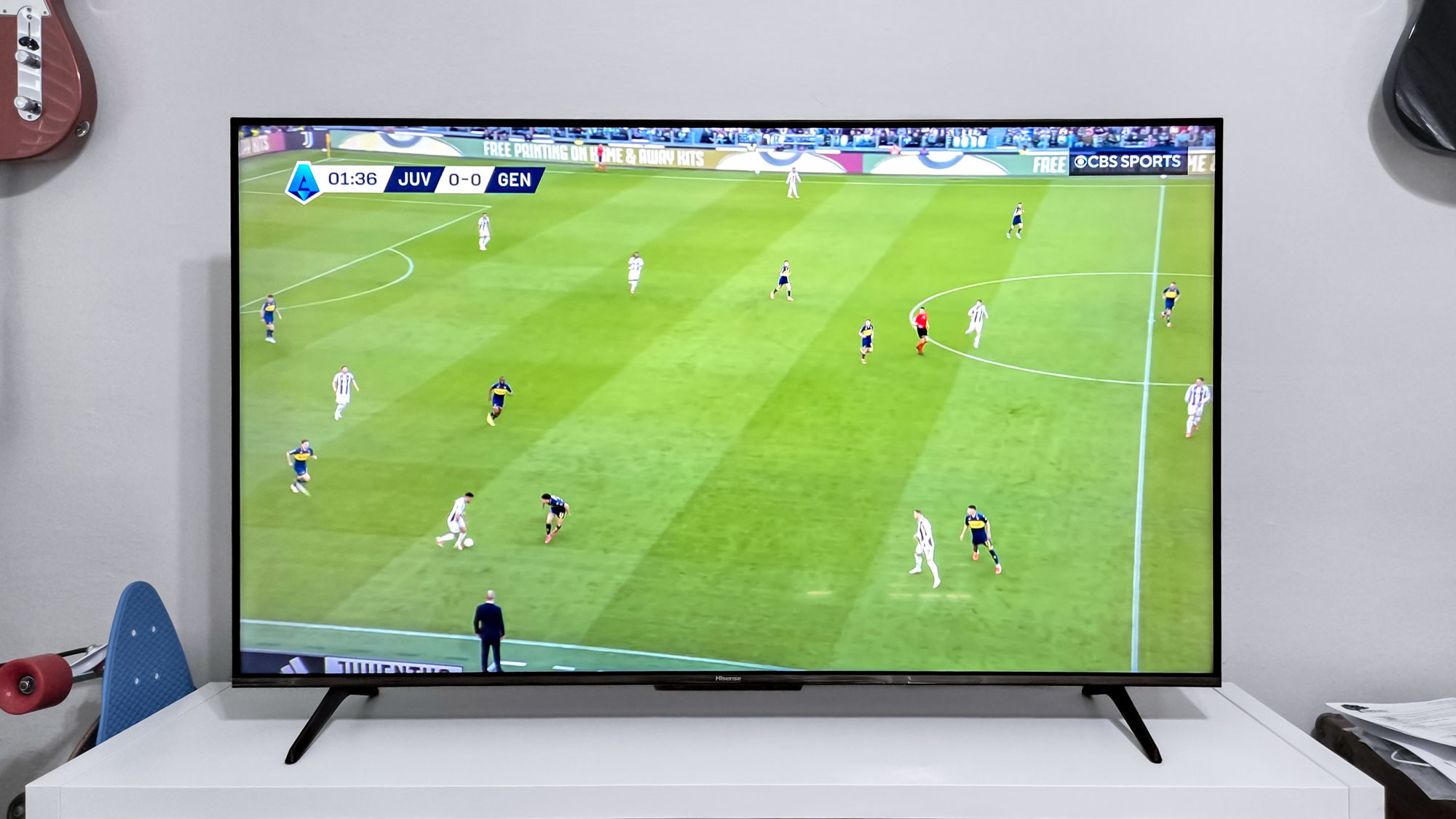
In the photo above, you can see Theater mode in action, presenting an accurate picture of a live sports stream on YouTube TV. Whatever you do, just don't use Vivid, which frankly shouldn't even be a picture mode allowed on TVs.
Hisense U6N Mini-LED TV review: Audio
Unfortunately, you'll want one of the best soundbars if you get the Hisense U6N.
The 20W speakers are plenty loud, which means volume is not an issue with this TV, but unless you're watching content that utilizes Dolby Atmos, the sound quality itself is often muddy and mediocre. Dialogue in particular is an area where I found the stock speakers on the Hisense to struggle.
Again, poor sound quality isn't a deal-breaker given the price, but it means you'll have to factor in a soundbar when budgeting for this TV.
Hisense U6N Mini-LED TV review: Gaming
Gaming on the Hisense U6N is fine, but there are some definite shortcomings.
Let's start with the good. This TV does come with some great gaming features, including Game Mode Plus, Motion Rate 240 and Auto Low Latency Mode (ALLM). The picture quality is excellent and there's very little input lag (just 9.3ms).
The U6N supports Dolby Vision 4K gaming at 60Hz with VRR, or you can digitally boost the refresh rate to 120Hz if you bump the resolution down to 1440p HD or 1080p Full HD.
Here's the problem, though: the variable refresh rate doesn't work at 120Hz. This is due to the lack of a panel that natively supports higher refresh rates.
So if you're a hardcore gamer looking to max out your settings on your gaming PC, PS5 Pro or Xbox Series X, there are better options out there. But if you're a more casual gamer, or can't afford to splurge on a higher-end TV, the Hisense U6N has enough going for it that you won't be disappointed.
Hisense Mini-LED TV review: Smart features
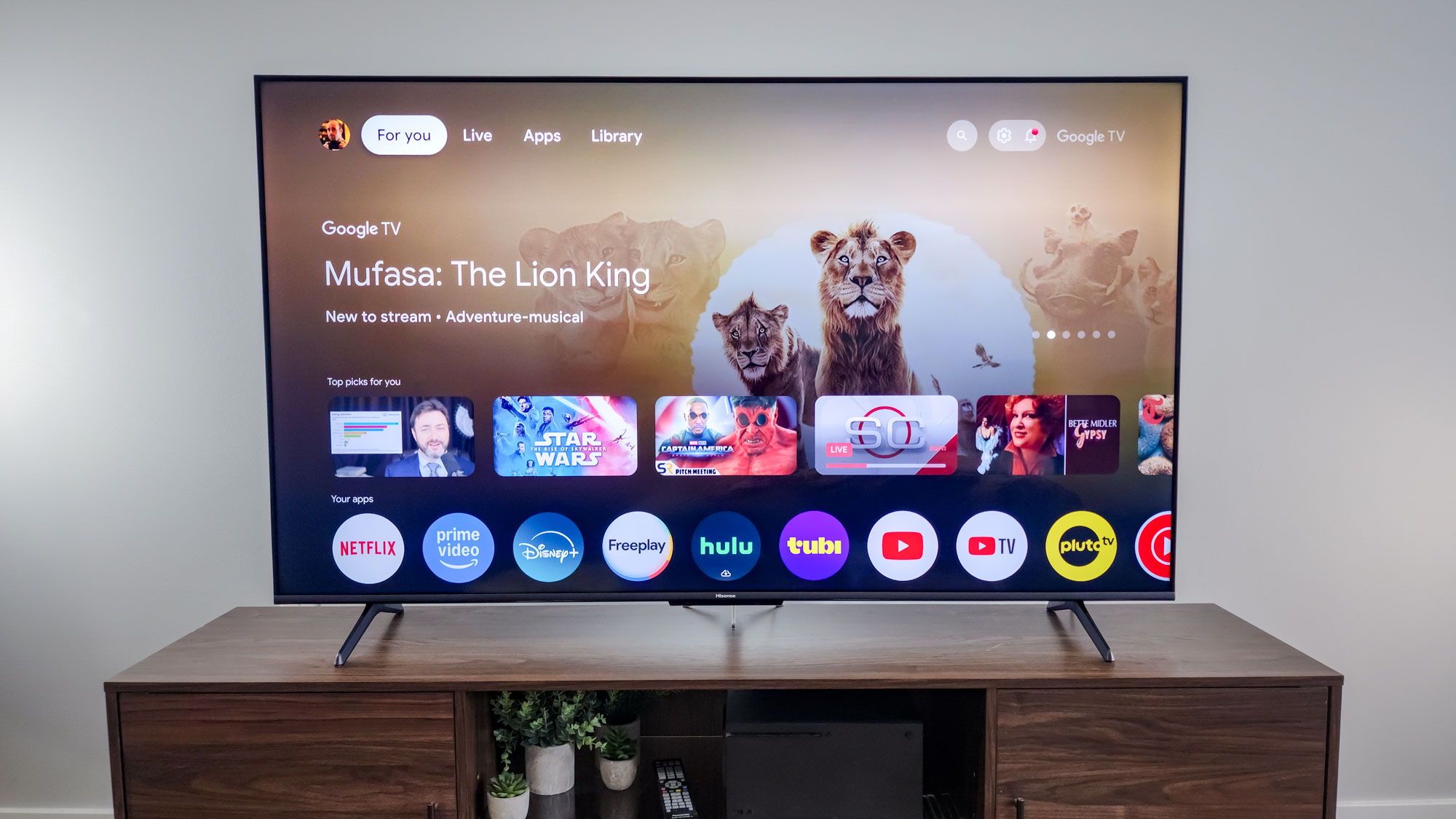
The Hisense U6N uses Google TV, which is my preferred smart TV OS. Of the four TVs I own, three are Google TVs and the other is a Samsung The Frame that I hate using because I can't stand the Samsung Tizen smart TV OS.
Granted, Roku and Fire TV have some apps that Google TV doesn't, particularly the screener apps I use to watch the latest shows and movies. But for the average person, it's got everything you need: Netflix, Max, Apple TV even. If it's one of the best streaming services, it has an app on Google TV.
Plus, Google TV gives you a built-in Chromecast, which is a major pro of using the TV OS.
Hisense U6N Mini-LED TV review: Verdict
Let me be clear — the Hisense U6N has a lot to offer for a relatively cheap price. Getting features like Dolby Vision IQ, Filmmaker mode and HDR 10+ mean you'll have a great viewing experience when it comes to movies and shows.
But when you compare this Mini-LED TV to some of its higher-priced competition, you start to notice some flaws. The display panel is bright, but it could be brighter. There are four HDMI ports, but none of them are HDMI 2.1, and the display panel is limited to a 60Hz refresh rate when it comes to 4K content.
The good news is that there are TVs with better performance for less than $200 more. The 2025 TCL QM6K is definitely one of them. There's also a new 2025 version of the Hisense U6 that'll be available soon that will offer better performance.
Neither of those TVs cost under $400, however. Which means if your TV shopping budget is capped at $400, the Hisense U6N is probably the best TV you can buy, barring an insane deal on an older model of a higher-end TV.
If you can spend a bit more, you might find the features you get for your money to be money well spent. If not, the Hisense U6N is a solid investment.

Malcolm has been with Tom's Guide since 2022, and has been covering the latest in streaming shows and movies since 2023. He's not one to shy away from a hot take, including that "John Wick" is one of the four greatest films ever made.
You must confirm your public display name before commenting
Please logout and then login again, you will then be prompted to enter your display name.
